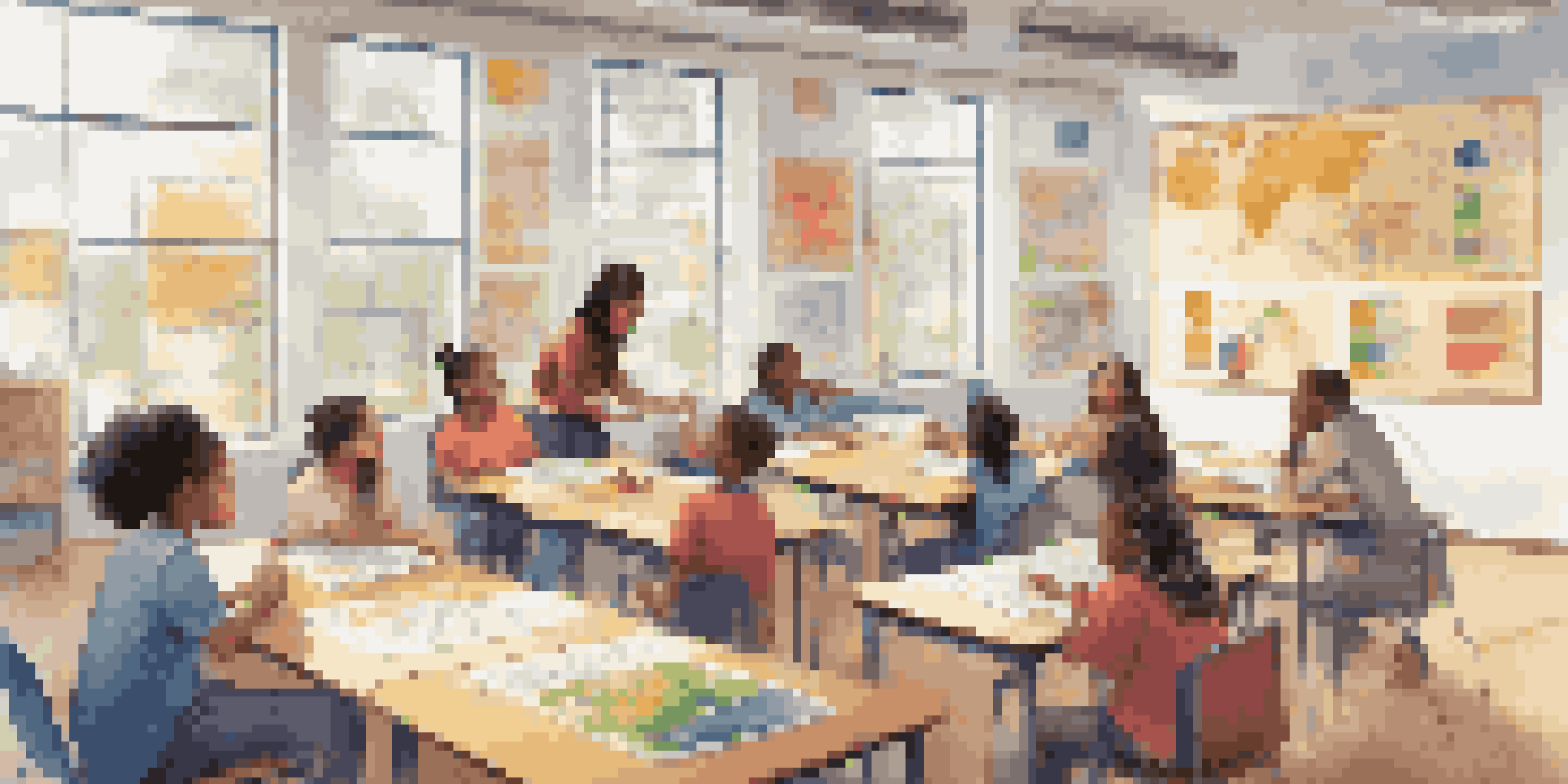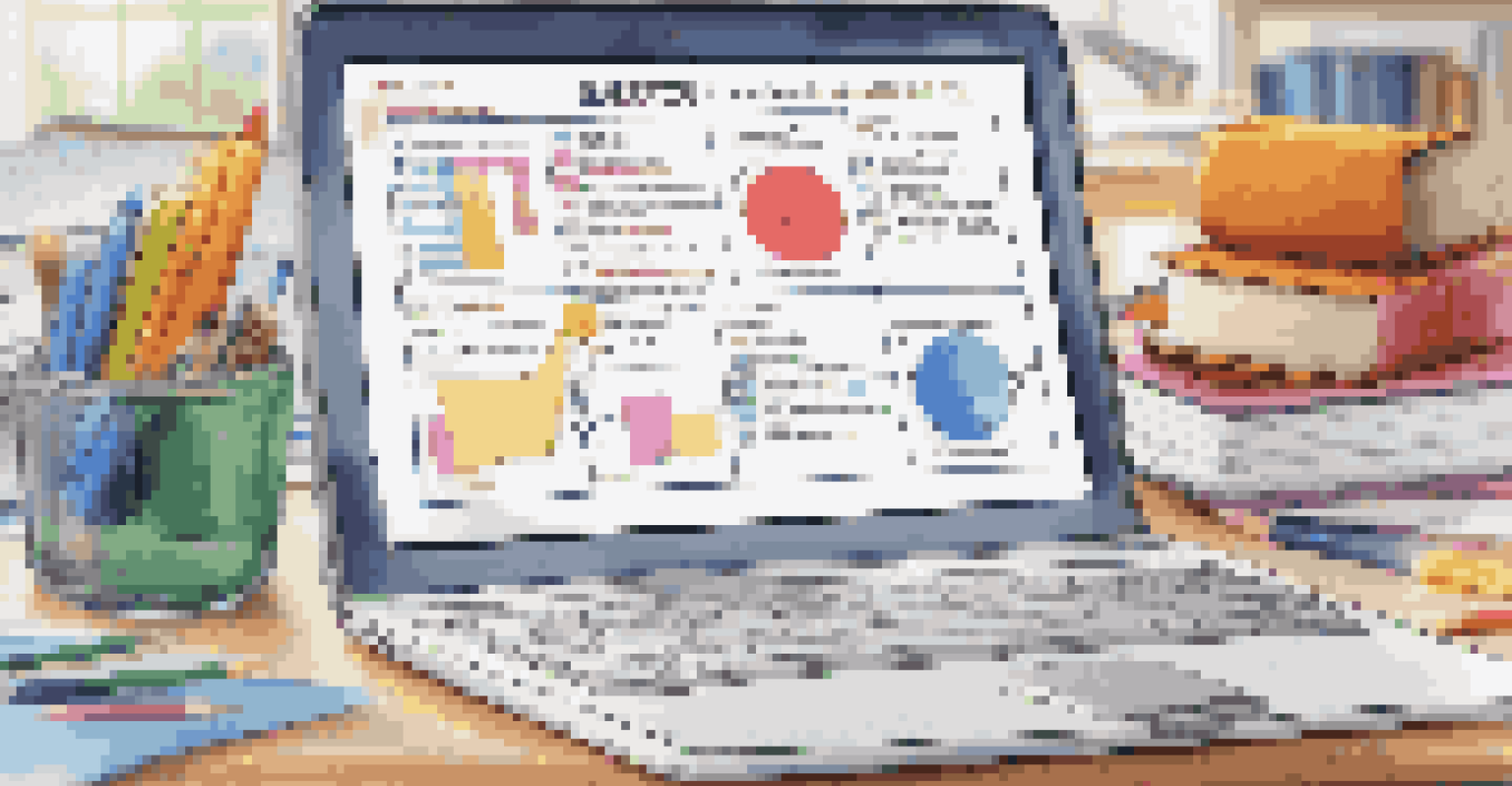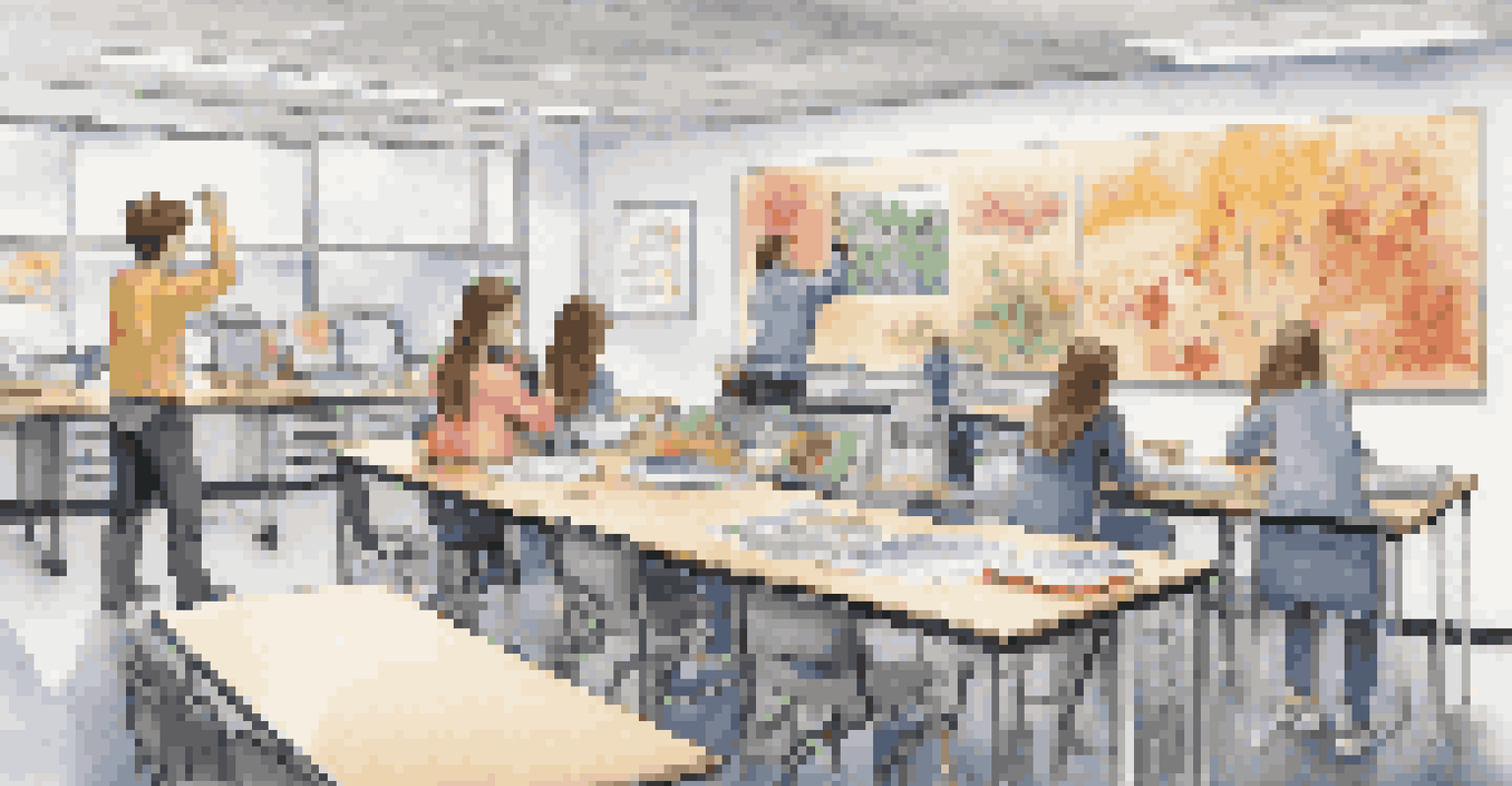The Influence of Learning Styles on Personalized Education Plans

What Are Learning Styles and Why Do They Matter?
Learning styles refer to the preferred ways individuals absorb, process, and retain information. Understanding these styles is crucial because they can significantly impact a student's educational experience. For instance, some students might thrive in visual learning environments, while others may excel with auditory or kinesthetic methods.
The mind is not a vessel to be filled, but a fire to be kindled.
Recognizing these preferences allows educators to tailor their teaching strategies, thereby making learning more effective and engaging. It's like customizing a recipe to suit individual tastes; when the ingredients match the preferences, the dish is more enjoyable. Likewise, when education aligns with a student’s learning style, it can lead to improved retention and understanding.
Moreover, acknowledging diverse learning styles fosters inclusivity in the classroom. It empowers teachers to create an environment where all students feel valued and capable of succeeding, regardless of their unique ways of learning.
Types of Learning Styles: A Deeper Dive
There are several recognized learning styles, including visual, auditory, reading/writing, and kinesthetic. Visual learners grasp concepts better through images, diagrams, and charts, while auditory learners prefer listening and discussing topics. Kinesthetic learners, on the other hand, thrive through hands-on experiences and physical activities.

Understanding these differences is essential for creating personalized education plans that cater to individual needs. For example, a visual learner may benefit from infographics and videos in their lessons, whereas a kinesthetic learner might excel with experiments and interactive activities. By aligning educational methods with these styles, teachers can enhance student engagement and success.
Understanding Learning Styles Matters
Recognizing individual learning styles enhances educational experiences by tailoring teaching methods to fit students' unique preferences.
Additionally, many students exhibit a combination of these styles, which makes a one-size-fits-all approach ineffective. Tailoring education plans to accommodate these diverse preferences can lead to a more holistic and effective learning experience.
How Learning Styles Inform Personalized Education Plans
Personalized education plans (PEPs) are designed to meet the unique needs of each student. By integrating insights from learning styles into these plans, educators can create more effective strategies for teaching. For example, a PEP for a visual learner may include frequent use of charts and visual aids, while an auditory learner's plan could focus on discussions and lectures.
Education is not the filling of a pail, but the lighting of a fire.
This approach not only helps in academic performance but also promotes a greater sense of agency among students. When learners see their preferences reflected in their education, they are more likely to engage actively and take ownership of their learning journey. It’s like being given a map that highlights the best routes tailored to your travel style.
Furthermore, involving students in the discussion about their learning preferences can enhance motivation and self-awareness. This collaboration fosters a sense of responsibility and encourages students to advocate for their own learning needs.
The Role of Educators in Identifying Learning Styles
Educators play a vital role in recognizing and accommodating different learning styles. By employing informal assessments, observations, and discussions, teachers can gain insights into their students' preferences. This process is akin to a detective piecing together clues to understand how each student learns best.
Once these styles are identified, educators can adjust their teaching methods accordingly. For instance, a teacher might introduce more group activities for social learners or provide additional visual materials for those who grasp concepts better through imagery. This flexibility not only enhances learning but also builds a supportive classroom environment.
Personalized Education Plans Are Key
Personalized education plans (PEPs) utilize insights from learning styles to create effective strategies that empower students in their learning journeys.
Moreover, continuous professional development can equip teachers with strategies to cater to various learning styles effectively. This ongoing learning journey ensures that educators remain responsive to the evolving needs of their students.
Challenges in Implementing Learning Styles in Education
While the concept of learning styles is beneficial, implementing them in educational settings can pose challenges. One significant hurdle is the risk of oversimplifying learning styles, as students may exhibit a blend of preferences rather than fitting neatly into one category. It's essential for educators to recognize this complexity.
Additionally, the reliance on standardized testing can sometimes overshadow the importance of personalized approaches. Schools often emphasize uniform metrics, which can inadvertently sideline the unique learning needs of individual students. Striking a balance between standardized assessments and personalized education plans is crucial for student success.
Furthermore, there may be limited resources or training available for educators to effectively incorporate learning styles into their teaching. Addressing these challenges requires collaboration among educators, administrators, and policymakers to ensure that every student receives the personalized support they need.
Real-World Examples of Personalized Education Plans
Many schools and educators are successfully implementing personalized education plans based on learning styles. For instance, a classroom that incorporates technology can provide various resources tailored to different learning preferences. A student who learns best visually might use educational apps that feature engaging graphics, while an auditory learner could benefit from podcasts or audio lessons.
In addition, project-based learning is a prime example of how diverse learning styles can be accommodated in a single classroom. Students can choose projects that align with their interests and learning preferences, whether it’s creating a video, conducting an experiment, or writing a report. This flexibility not only enhances engagement but also fosters creativity.
Challenges in Implementing Learning Styles
While beneficial, effectively incorporating learning styles into education faces challenges such as oversimplification and resource limitations.
Moreover, many educational institutions are now using data analytics to track student progress and adapt personalized plans accordingly. This data-driven approach allows teachers to fine-tune their strategies based on real-time feedback, ensuring that each student’s unique learning journey is supported.
The Future of Learning Styles in Education
As education evolves, the understanding of learning styles will likely continue to shape personalized education plans. With advancements in technology and data analytics, educators will have more tools at their disposal to tailor learning experiences effectively. Imagine a future where artificial intelligence can suggest resources and strategies based on each student's learning profile.
Furthermore, the growing emphasis on social-emotional learning is likely to complement the focus on learning styles. By considering emotional and social factors alongside cognitive preferences, educators can create an even more holistic approach to personalized education. It's like nurturing a garden where each plant thrives under the right conditions.

Ultimately, the goal is to create an inclusive educational environment that values and respects individual learning preferences. As more educators embrace this approach, we can expect to see students thriving in ways that align with their unique styles, paving the way for a brighter future in education.